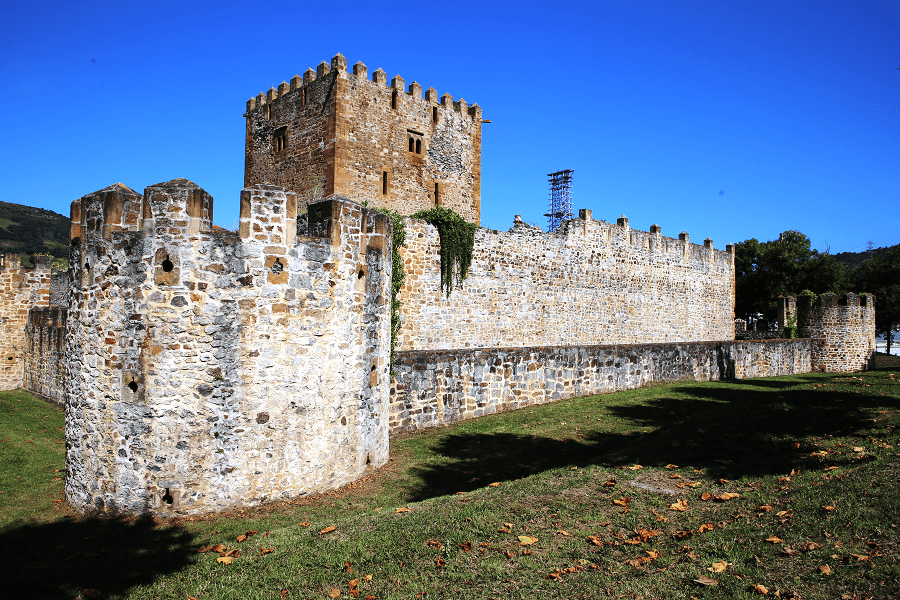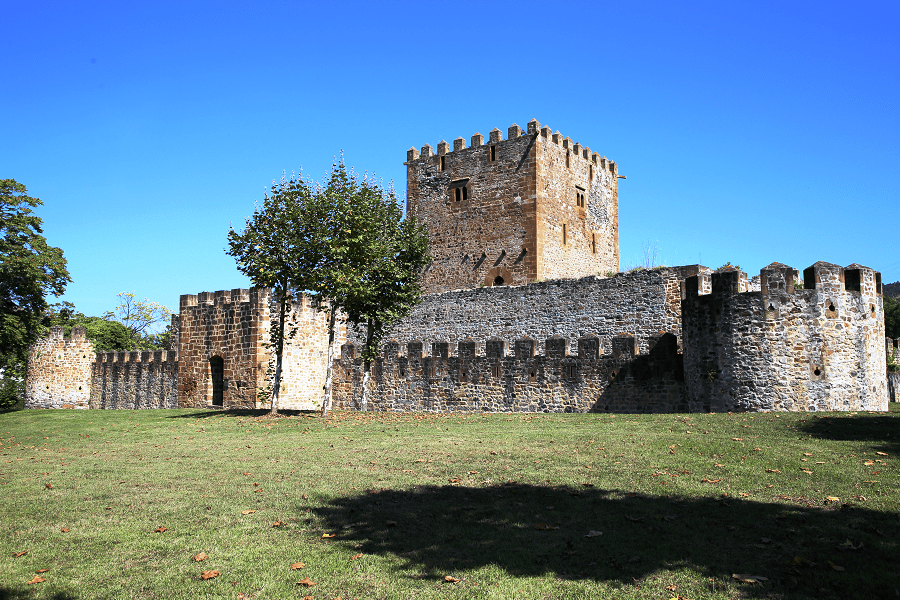The castle of Muñatones (in Basque: Muñatones gaztelua) in Musques (Basque country, Spain) rises up dominating the meadows and marshes where the Barbadún river and its tributary streams meet the Cotorrio river.
The initial work of this fortress dates back to 1339 and is due to the marriage of Juan López de Salazar and Inés de Muñatones. They chose a strategic location, the San Martín site, then located next to a river port (which has disappeared) and the coastal road that led from Portugalete to Castro Urdiales (Cantabria). In the second half of the 14th century, Juan Sánchez refurbished the walls and between 1439 and 1446 his grandson Lope García de Salazar renewed the entire complex. Finally, in 1476, some minor works began that would last until the end of the 15th century.
The building is a complex that formed a joint with other complementary buildings: the disappeared Hermitage of San Martín de Muñatones and a Renaissance palace, currently restored. The castle, like the majority of medieval Basque castles, originates from a central nucleus: a very hermetic cubic crenellated tower-fortress, which is surrounded by a rectangular walled enclosure with a cube on each side and a square tower on two of its sides. Through this access we enter a second defense line, battlemented, which leads to the tower itself.
Since 1968, the monumental complex has been surrounded by the facilities of the largest petrochemical plant in Spain: Petronor, a company whose main graphic element is a letter P jagged by the battlements of the castle.
How to get to?
From Vitoria-Gasteiz 1 hr 4 min (82.1 km) via AP-68
From Bilbao 22 min (19.8 km) via A-8
From Madrid 4 hr 12 min (422 km) via A-1












